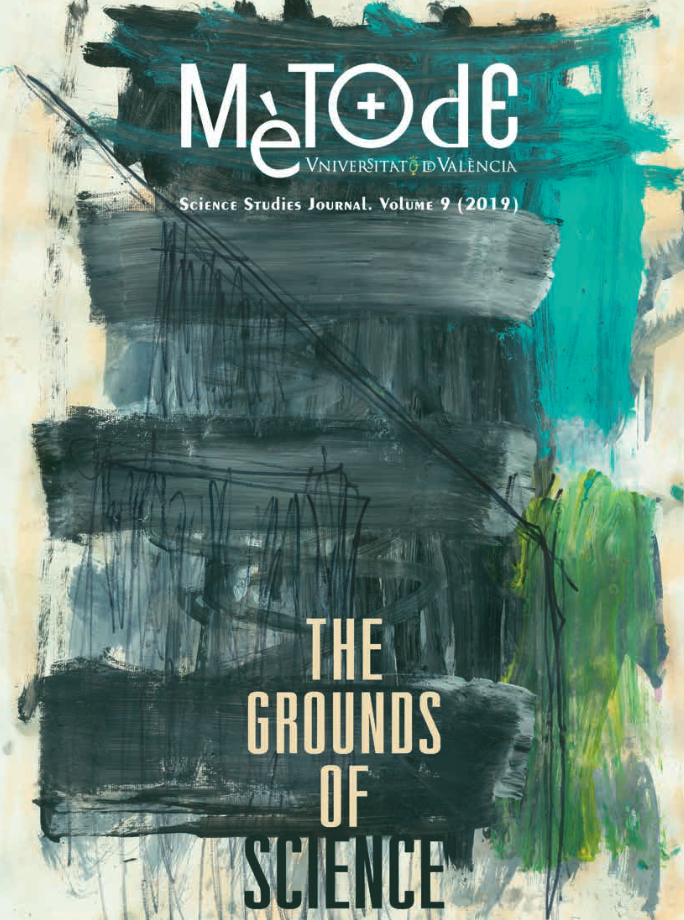Cuando la tecnología va más rápido que la comprensión: Propiedades poco intuitivas de las redes neuronales profundas
DOI:
https://doi.org/10.7203/metode.9.11035Palabras clave:
aprendizaje profundo, aprendizaje automático, redes neuronales, propiedades poco intuitivas Resumen
Resumen
El aprendizaje profundo es un tema indiscutiblemente candente, no solo entre académicos e industria, sino también en la sociedad y en los medios de comunicación. Las razones de este crecimiento de popularidad son múltiples: una disponibilidad sin precedentes de datos y potencia de cálculo, la aparición de algunas metodologías innovadoras, trucos técnicos menores pero significativos, etc. Sin embargo, resulta curioso que el éxito actual y la práctica del aprendizaje profundo parecen no estar correlacionados con su comprensión más teórica y formal. Debido a esto, la vanguardia tecnológica del aprendizaje profundo presenta una serie de propiedades o situaciones poco intuitivas. En este texto se resaltan algunas de estas propiedades poco intuitivas, tratando de mostrar trabajos recientes relevantes y de evidenciar la necesidad de saber más sobre ellos, ya sea mediante métodos empíricos o formales.
 Descargas
Descargas
 Citas
Citas
Cybenko, G. (1989). Approximation by superposition of sigmoidal functions. Mathematics of Control, Signals and Systems, 2(4), 303–314. doi: 10.1007/BF02551274
Dauphin, Y. N., Pascanu, R., Gulcehere, C., Cho, K., Ganguli, S., & Bengio, Y. (2014). Identifying and attacking the saddle point problem in high-dimensional non-convex optimization. In Z. Ghahramani, M. Welling, C. Cortes, N. D. Lawrence, & K. Q. Weinberger (Eds.), Advances in neural information processing systems, 27(pp. 2933–2941). New York, NY: Curran Associates Inc.
Erhan, D., Bengio, Y., Courville, A., Manzagol, P.-A., Vincent, P., & Bengio, S. (2010). Why does unsupervised pre-training help deep learning? Journal of Machine Learning Research, 11, 625–660.
Gilmer, J., Metz, L., Faghri, F., Schoenholz, S. S., Raghu, M., Wattenberg, M., & Goodfellow, I. (2018). Adversarial spheres. Retrieved from https://arxiv.org/abs/1801.02774
Goodfellow, I., Vinyals, O., & Saxe, A. M. (2015). Qualitatively characterizing neural network optimization problems. In Proceedings of the International Conference on Learning Representations (ICLR 2016). San Diego, CA, USA: ICLR. Retrieved from https://arxiv.org/abs/1412.6544
Han, S., Mao, H., & Dally, W. J. (2016). Deep compression: Compressing deep neural networks with pruning, trained quantization and Huffman coding. In Proceedings of the International Conference on Learning Representations (ICLR 2016). San Juan, Puerto Rico: ICLR. Retrieved from https://arxiv.org/abs/1510.00149
Hinton, G., Vinyals, O., & Dean, J. (2014). Distilling the knowledge in a neural network. In NIPS 2014 Deep Learning and Representation Learning Workshop. Montreal, Canada: NIPS. Retrieved from https://arxiv.org/abs/1503.02531
Kawaguchi, K. (2016). Deep learning without poor local minima. In D. D. Lee, M. Sugiyama, U. V. Luxburg, I. Guyon, & R. Garnett (Eds.), Advances in neural information processing systems, 29(pp. 586–594). New York, NY: Curran Associates Inc.
Larochelle, H. (2017, 28 june). Neural networks II. Deep Learning and Reinforcement Learning Summer School. Montreal Institute for Learning Algorithms, University of Montreal. Retrieved on 12 January 2018 from https://mila.quebec/en/cours/deep-learning-summer-school-2017/slides/
LeCun, Y., Bengio, Y., & Hinton, G. (2015). Deep learning. Nature, 521, 436–444. doi: 10.1038/nature14539
LeCun, Y., Bottou, L., Orr, G. B., & Müller, K.-R. (2002). Efficient backprop. In G. B. Orr & K.-R. Müller (Eds.), Neural networks: Tricks of the trade. Lecture notes in computer science. Volume 1524 (pp. 9–50). Berlin: Springer. doi: 10.1007/3-540-49430-8
Li, H., Xu, Z., Taylor, G., & Goldstein, T. (2017). Visualizing the loss landscape of neural nets. Retrieved from https://arxiv.org/abs/1712.09913
McCloskey, M., & Cohen, N. (1989). Catastrophic interference in connectionist networks: The sequential learning problem. Psychology of Learning and Motivation, 24, 109–165. doi: 10.1016/S0079-7421(08)60536-8
Nguyen, A., Yosinski, J., & Clune, J. (2015). Deep neural networks are easily fooled: High confidence predictions for unrecognizable images. In Proceedings of the IEEE International Conference on Computer Vision and Pattern Recognition (CVPR) (pp. 427–436). Boston, MA: IEEE. doi: 10.1109/CVPR.2015.7298640
Papernot, N., McDaniel, P., Goodfellow, I., Jha, S., Celik, Z. B., & Swami, A. (2017). Practical black-box attacks against machine learning. In Proceedings of the 2017 ACM Asia Conference on Computer and Communications Society (Asia-CCCS) (pp. 506–619). New York, NY: Association for Computing Machinery. doi: 10.1145/3052973.3053009
Serrà, J., Surís, D., Miron, M., & Karatzoglou, A. (2018). Overcoming catastrophic forgetting with hard attention to the task. In Proceedings of the 35th International Conference on Machine Learning (ICML) (pp. 4555–4564). Stockholm: ICML.
Szegedy, C., Zaremba, W., Sutskever, I., Bruna, J., Erhan, D., Goodfellow, I., & Fergus, R. (2014). Intriguing properties of neural networks. In Proceedings of the International Conference on Learning Representations (ICLR). Banff, Canada: ICLR. Retrieved from https://arxiv.org/abs/1312.6199
Wolfram, S. (2002). A new kind of science. Champaign, IL: Wolfram Media.
Yosinski, J., Clune, J., Bengio, Y., & Lipson, H. (2014). How transferable are features in deep neural networks? In Z. Ghahramani, M. Welling, C. Cortes, N. D. Lawrence, & K. Q. Weinberger (Eds.), Advances in neural information processing systems, 27 (pp. 3320–3328). New York, NY: Curran Associates Inc.
Zhang, C., Bengio, S., Hardt, M., Recht, B., & Vinyals, O. (2017). Understanding deep learning requires rethinking generalization. In Proceedings of the International Conference on Learning Representations (ICLR). Toulon, France: ICLR. Retrieved from https://arxiv.org/abs/1611.03530
Zoph, B., & Le, Q. V. (2016). Neural architecture search with reinforcement learning. Proceedings of the International Conference on Learning Representations (ICLR). Toulon, France: ICLR. Retrieved from https://arxiv.org/abs/1611.01578
Descargas
Publicado
Cómo citar
-
Resumen1500
-
PDF 653
Número
Sección
Licencia
![]()
Todos los documentos incluidos en OJS son de acceso libre y propiedad de sus autores.
Los autores que publican en esta revista están de acuerdo con los siguientes términos:
- Los autores conservan los derechos de autor y garantizan a Metode Science Studies Journal el derecho a la primera publicación del trabajo, licenciado bajo una licencia de Creative Commons Reconocimiento-NoComercial-SinObraDerivada 4.0 Internacional, que permite a otros compartir el trabajo con un reconocimiento de la autoría del trabajo y citando la publicación inicial en esta revista.
- Se permite y se anima a los autores a difundir sus trabajos electrónicamente a través de páginas personales e institucionales (repositorios institucionales, páginas web personales o perfiles a redes profesionales o académicas) una vez publicado el trabajo.





